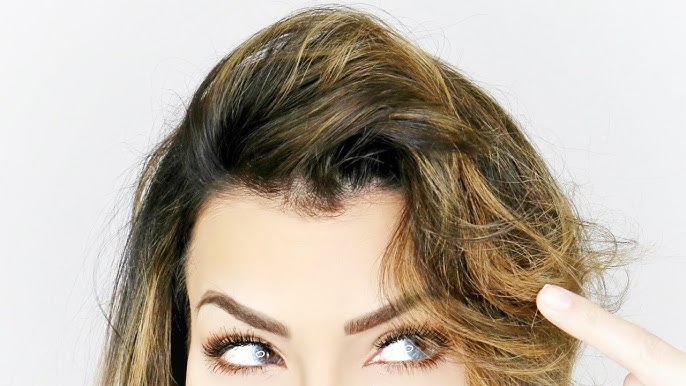Introduction to Cowlicks
A cowlick is a section of hair that grows in a different direction from the rest of the hair, often making it appear unruly or difficult to manage. While cowlicks can add character to a hairstyle, they can also create challenges when styling. Understanding what causes cowlicks, the tools and techniques to manage them, and ways to work with them can make a world of difference in daily styling routines.
What Causes a Cowlick?
The cause of cowlicks lies in hair follicles’ growth pattern. In certain areas, follicles may naturally spiral or grow in different directions, often determined by genetics. People with thicker, straighter hair may notice cowlicks more, although they occur in all hair types. A cowlick is most often visible at the crown of the head, near the front hairline, or at the back.
Identifying Different Types of Cowlicks
Cowlicks typically appear in three main areas:
- Front Hairline Cowlicks: Found at the front, often causing bangs or forelocks to stick up or resist lying flat.
- Crown Cowlicks: Located at the top back of the head, creating a spiral effect that can be challenging to flatten.
- Back-of-the-Head Cowlicks: Appear near the nape of the neck, often affecting short styles by flipping hair outward.
Each of these requires a slightly different approach, particularly when it comes to length and product choice.
Tools Needed to Tame a Cowlick
Managing a cowlick is easier with the right tools. Commonly recommended items include:
- Blow-dryer with nozzle attachment for directing airflow.
- Round brush or paddle brush to guide hair into place.
- Styling products like gels, pomades, or wax for hold.
- Flat iron for smoothing particularly resistant areas.
Techniques for Fixing a Cowlick with Styling
One of the most effective ways to manage a cowlick is with heat and product. Here’s how:
- Blow-Dry Method: Direct the hairdryer opposite to the cowlick’s growth, using a round brush to pull the hair into place.
- Flat Iron: Smooth over the cowlick, focusing on the roots, to create a sleeker appearance.
- Setting with Product: Use a lightweight product to hold the hair in place without weighing it down.
Different techniques work better for short hair (e.g., using pomade) versus long hair (e.g., applying leave-in conditioner or mousse).
Hair Products to Control Cowlicks
Selecting the right product can make cowlicks more manageable:
- Pomades and Waxes: Great for short hair as they offer strong hold.
- Gels: Medium hold that works well for most lengths.
- Serums and Lightweight Mousse: Better for fine or long hair, as these are less heavy but still help manage frizz and hold shape.
Using Haircuts to Minimize a Cowlick
A skilled haircut can significantly minimize a cowlick’s appearance. Ask a stylist to layer the hair around the cowlick or add texture to reduce bulk in specific areas. For those with crown cowlicks, a slightly longer cut or bangs can help blend the area, making the cowlick less noticeable.
Home Remedies for Managing Cowlicks
You don’t always need expensive products; some home methods can help:
- Warm Water and Heat: Wetting the cowlick and blow-drying it in the desired direction can help.
- Natural Oils: Coconut or almond oil can add weight and help smooth a cowlick.
- Using a Hat: Putting on a snug hat or headband after styling can help set the hair.
How to Train a Cowlick Over Time
Cowlicks can sometimes be “trained” with daily attention. With patience, using a brush to redirect hair combined with product application, some people can make a cowlick lie flat. However, training can take weeks or even months, so patience is essential.
Quick Fixes for When You’re in a Hurry
Need a quick cowlick fix? Try these methods:
- Wet, Style, and Go: Wet the area, apply a light product, and smooth with fingers.
- Use a Hairpin or Clip: Temporarily pin down the cowlick to help it stay in place.
- Blow-dry and Flatten: Direct heat to the roots with a paddle brush for a fast fix.
How to Embrace and Style Around a Cowlick
Instead of fighting a cowlick, consider working it into your look. Cowlicks can add volume and personality, so explore hairstyles that accommodate or highlight them, like a textured fringe or layered bob.
Managing Cowlicks in Children
Cowlicks are common in kids and are generally more challenging to manage due to finer hair. Avoid heavy products and instead use gentle brushing and lightweight styling aids. For cuts, keep them slightly longer in cowlick-prone areas to help the hair lay naturally.
When to Seek Professional Help
If a cowlick becomes frustrating, consult a stylist. They can provide advice on product use, styling techniques, or a new haircut to make styling easier. Professional guidance can help you feel more confident about your cowlick.
Products to Avoid for Cowlick-Prone Hair
Certain products can make cowlicks more pronounced:
- Heavy Creams: These can weigh down hair and intensify cowlicks.
- Sticky Gels: May make hair look stiff and draw attention to the cowlick.
- Hairspray: For thin or fine hair, it can weigh down and fail to hold.
Myths and Misconceptions About Cowlicks
Common myths include:
- “Cowlicks can’t be tamed”: With time and the right products, most cowlicks can be managed.
- “Cowlicks only affect short hair”: Long hair can also be affected; it’s just easier to camouflage.
- “Only some products work”: In reality, products work differently for everyone, so trial and error may be necessary.
Conclusion
Cowlicks, while sometimes challenging, can add character and uniqueness to your hairstyle. By experimenting with different styling techniques, tools, and products, you can find a routine that works best for you, or even embrace your cowlick as part of your signature look.
